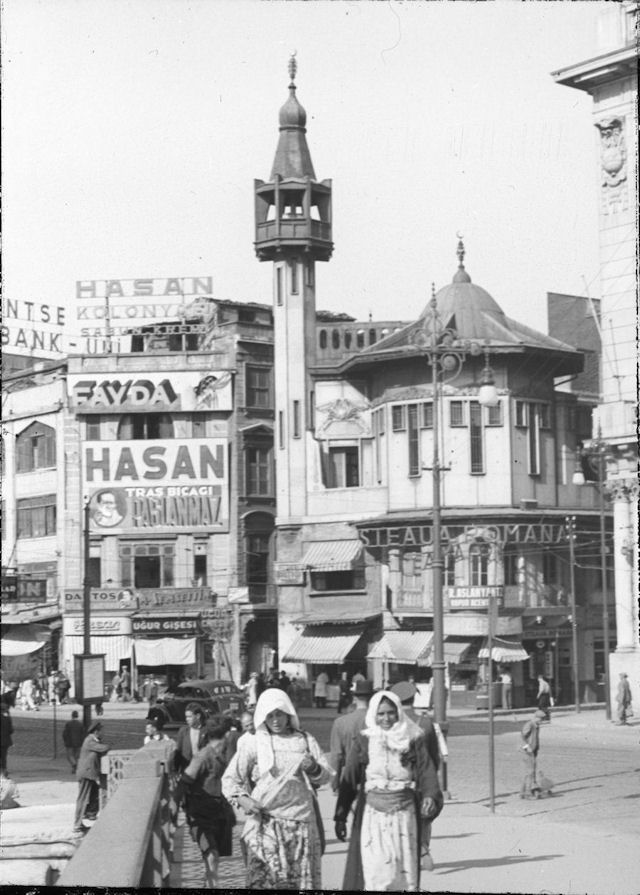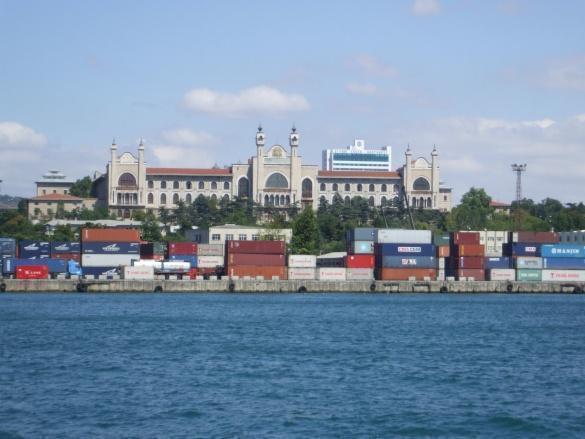
D'Aronco ( 1857-1932)
D'Aronco was invited Turkey for construction projects after the earthquake in 1894 in the reign of Abdulhamid II . He ascended to the chief architect position of palace and created unique buildings in Istanbul successfully combining Islamic Architecture and Art Nouveau - especially Secession style. He also designed pure Art Nouveau project like Casa Botter in Beyoglu and kiosks at Bosphorus shore that impacted Turkish architectural heritage.
for his works in other countries : http://www.arteliberty.it/to_padiglione_aronco.html
Merzifonlu Masjid
D'Aronco was invited Turkey for construction projects after the earthquake in 1894 in the reign of Abdulhamid II . He ascended to the chief architect position of palace and created unique buildings in Istanbul successfully combining Islamic Architecture and Art Nouveau - especially Secession style. He also designed pure Art Nouveau project like Casa Botter in Beyoglu and kiosks at Bosphorus shore that impacted Turkish architectural heritage.
for his works in other countries : http://www.arteliberty.it/to_padiglione_aronco.html
Merzifonlu Masjid
Kemeraltı Caddesi, Karaköy / Beyoglu

Kemeraltı Caddesi, Karaköy / Beyoglu
Retrieved from http://www.gazeteboyut.com/turkiyede-tarih-budur

Kemeraltı Caddesi, Karaköy / Beyoglu
After destruction
After the World War II, Turkey adopted more liberal economic and political system that result in massive construction and industrialization projects. The historic core of the city- mostly the regions in Historical Peninsula and Beyoglu- was destroyed to open wide roads for modern transportation. Karaköy was one of the main regions planned as a modern square and transportation hub. Along the ring between Karaköy-Kabataş-Beşiktaş, many mosques, fountains, church yards and building were destroyed to create the wide road in that part of city. The mosque designed by D'Aranco was one of the victims of that period and eventually the square lost its prominence due to following recreations and tram route. Now the place of the mosque is empty that means this masterpiece is destroyed unnecessarily.
Kemeraltı Caddesi, Karaköy / Beyoglu
 |
Kemeraltı Caddesi, Karaköy / Beyoglu
Casa Botter
Casa Botter is on Istiklal Street at the direction going Tunnel near Swedish Ambassadory. It is one of the most significant Art Nouveau building in the city with a floral figured façade and handcraft ironwork balcony. The building was used as an atelier and fashion gallery - every floor alloted for London, Paris and Vienna fashions- belonging to Jean Botter who was the personal tailor of Sultan Abdulhamid II.

Istiklal Caddesi, Beyoglu
Retrieved from: http://istanbulmakesmesmile.blogspot.com/2011/12/botter-han.html#!/2011/12/botter-han.html
Art Nouveau Fountain - Lalei Çeşme by D'aranco
on the intersection of Laleli Çeşme Sokak and Şair Ziya Paşa Caddesi, Kuledibi / Beyoğlu
Art Nouveau Tomb by D'Aranco
Tomb of Sheikh Zafir, Mehmet Ali Bey Sokak / Beşiktaş
The tomb and the fountain both has the similar arc looking figure at top and cascading geometric shapes under that figure and creates the same impression on the observer. Besides, the organic, floral motifs maturize it as great Art Nouveau interpretion of classical architectural forms.
Clock Tower in Şişli Hospital for Children
(Şişli Etfal Hastanesi Saat Kulesi)
School of Medicine
Today: Marmara University, Haydarpaşa / Kadıköy
D'Aronco designed this building with prominent contemporary architect Alexandre Vallaury who was educated in École des Arts in Paris. Vallaury synthesized Turkish-Islamic arhitecture with Beaux Arts Neoclassicism. School of Medicine reflects signs of both artists but Art Nouveau effects are not overwhelming like other projects of D'Aronco.








































